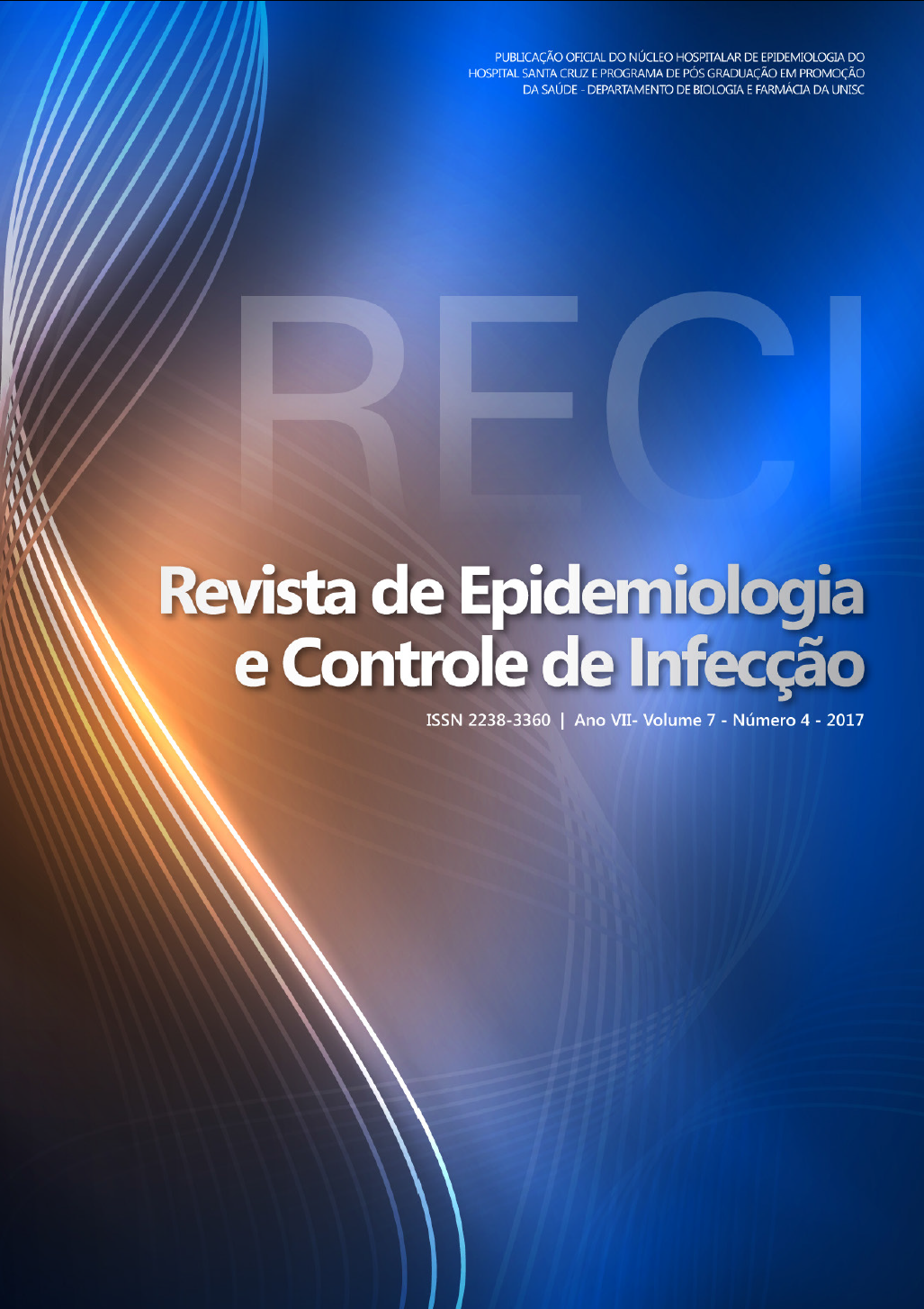Risco de infecção para o cliente oncológico em uso de cateter venoso central totalmente implantado – Revisão integrativa
DOI:
https://doi.org/10.17058/reci.v7i4.9885Resumo
Justificativa e objetivos: O cateter totalmente implantado tem sido cada vez mais utilizado em pacientes oncológicos e é capaz de minimizar complicações decorrentes da terapia intravenosa periférica, sendo relevante para segurança do paciente na infusão de drogas antineoplásicas. Este estudo teve como objetivo identificar as condutas de manipulação, reunir e sintetizar as evidências disponíveis na literatura sobre medidas de prevenção e controle de IRAS relacionadas ao uso de catéteres totalmente implantados. Conteúdo: Realizou-se uma revisão integrativa no período de 2009 a 2016 por meio das bases de dados, MEDLINE (Literature Analysis and Retrieval System Online) e LILACS (Literatura Latino-Americana e do Caribe em Ciências da Saúde) que resultou na seleção de 10 artigos, dos quais a maioria era nacional (seis) e em português (sete). Para o levantamento na literatura e seleção da questão do estudo, foi utilizada a estratégia PICO que consiste em um acróstico: Paciente, Intervenção, Comparação e Outcomes/desfecho. Foram abordadas complicações, manejo, manutenção de cateteres totalmente implantados e a relevância do conhecimento tecnocientífico do enfermeiro que manipula esse dispositivo, visando qualidade e segurança da assistência. Conclusão: Segundo os artigos analisados, o tempo de permanência do cateter, às complicações inerentes ao uso como obstrução, infecção, extravasamento, trombose e deslocamento, bem como o manejo/ manuseio, manutenção e punção do dispositivo foram os assuntos evidenciados. Para os efeitos de intervenção por parte da enfermeira, fica explicito que havendo uma padronização por meio de educação e capacitação da equipe de enfermagem, é possível trabalhar em prol da prevenção do potencial para infecção do cateterismo venoso central totalmente implantado em pacientes oncológicos propiciando maior segurança no manuseio do cateter e prevenindo o surgimento de complicações, o que poderá garantir assistência de enfermagem qualificada e, consequentemente, melhor qualidade de vida aos pacientes atendidos.Downloads
Downloads
Publicado
Como Citar
Edição
Seção
Licença
The author must state that the paper is original (has not been published previously), not infringing any copyright or other ownership right involving third parties. Once the paper is submitted, the Journal reserves the right to make normative changes, such as spelling and grammar, in order to maintain the language standard, but respecting the author’s style. The published papers become ownership of RECI, considering that all the opinions expressed by the authors are their responsibility. Because we are an open access journal, we allow free use of articles in educational and scientific applications provided the source is cited under the Creative Commons CC-BY license.


